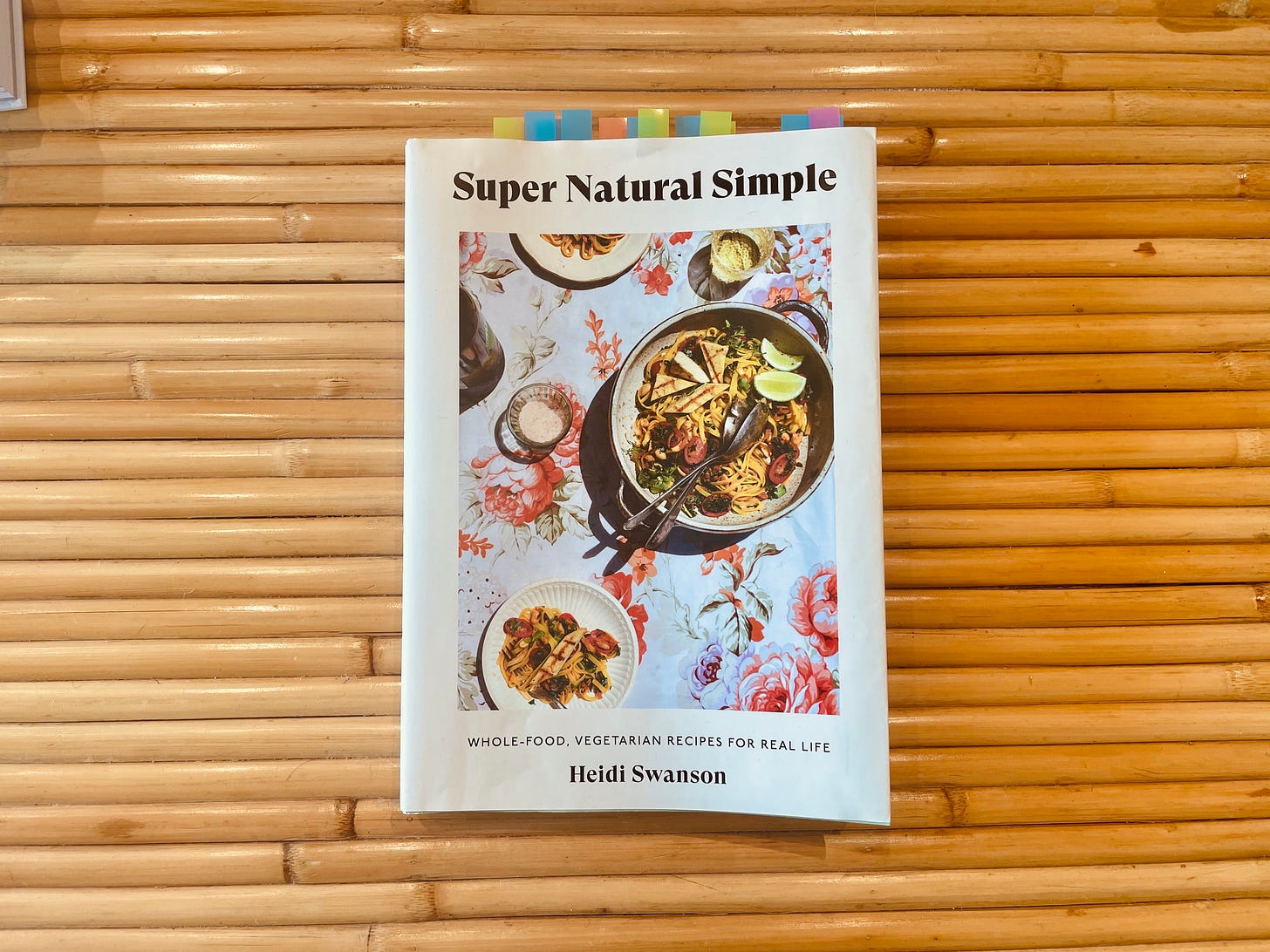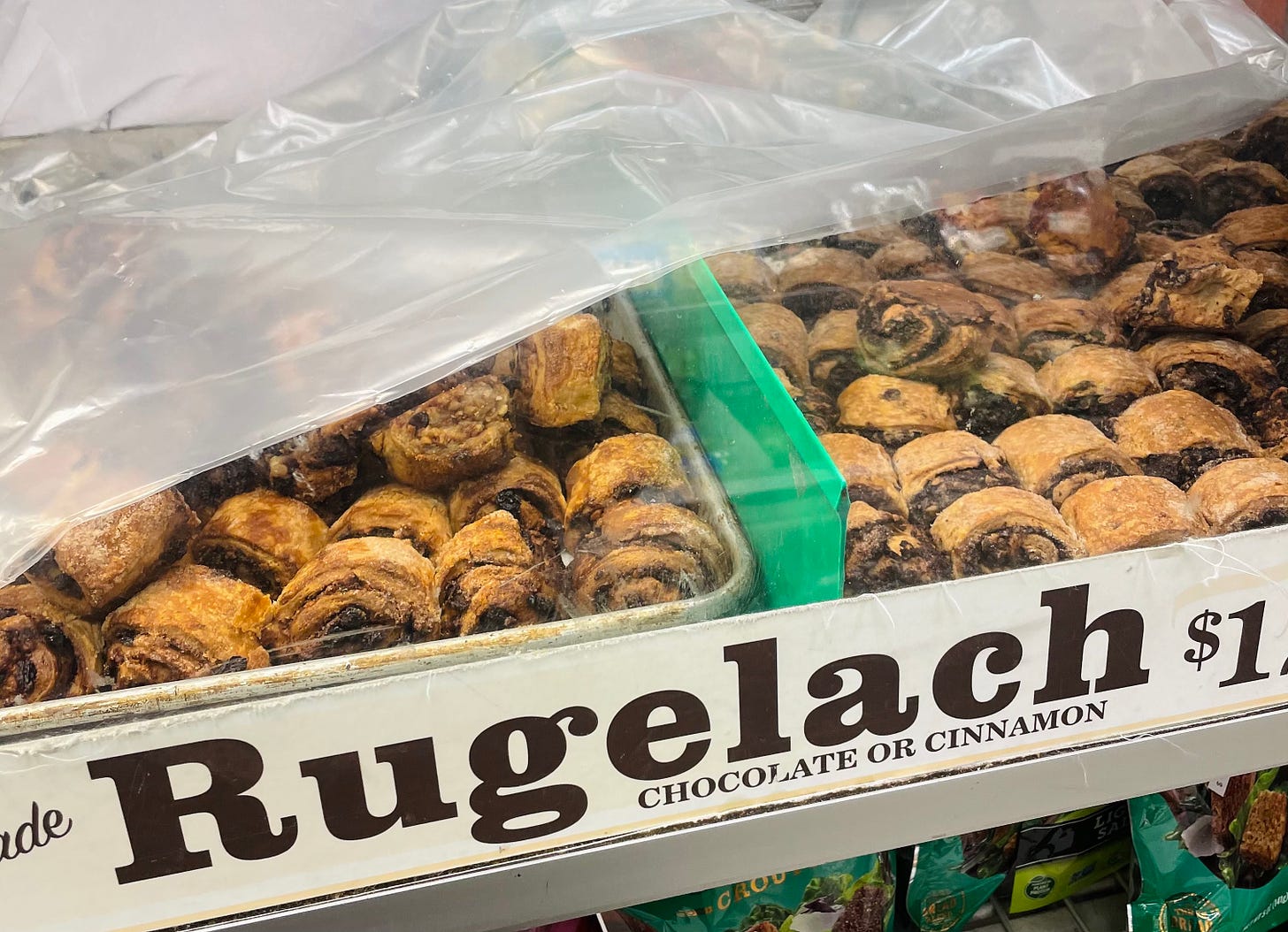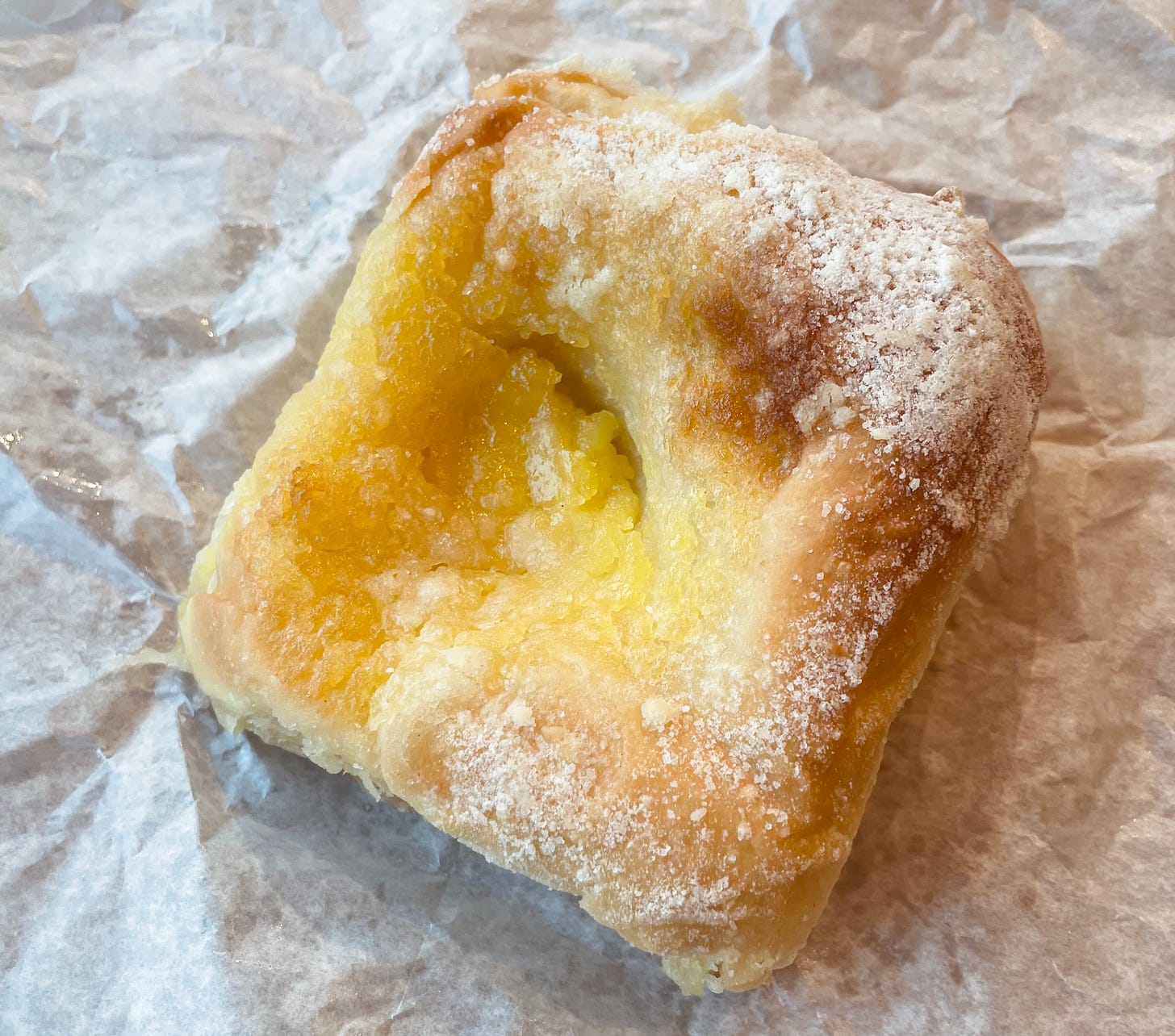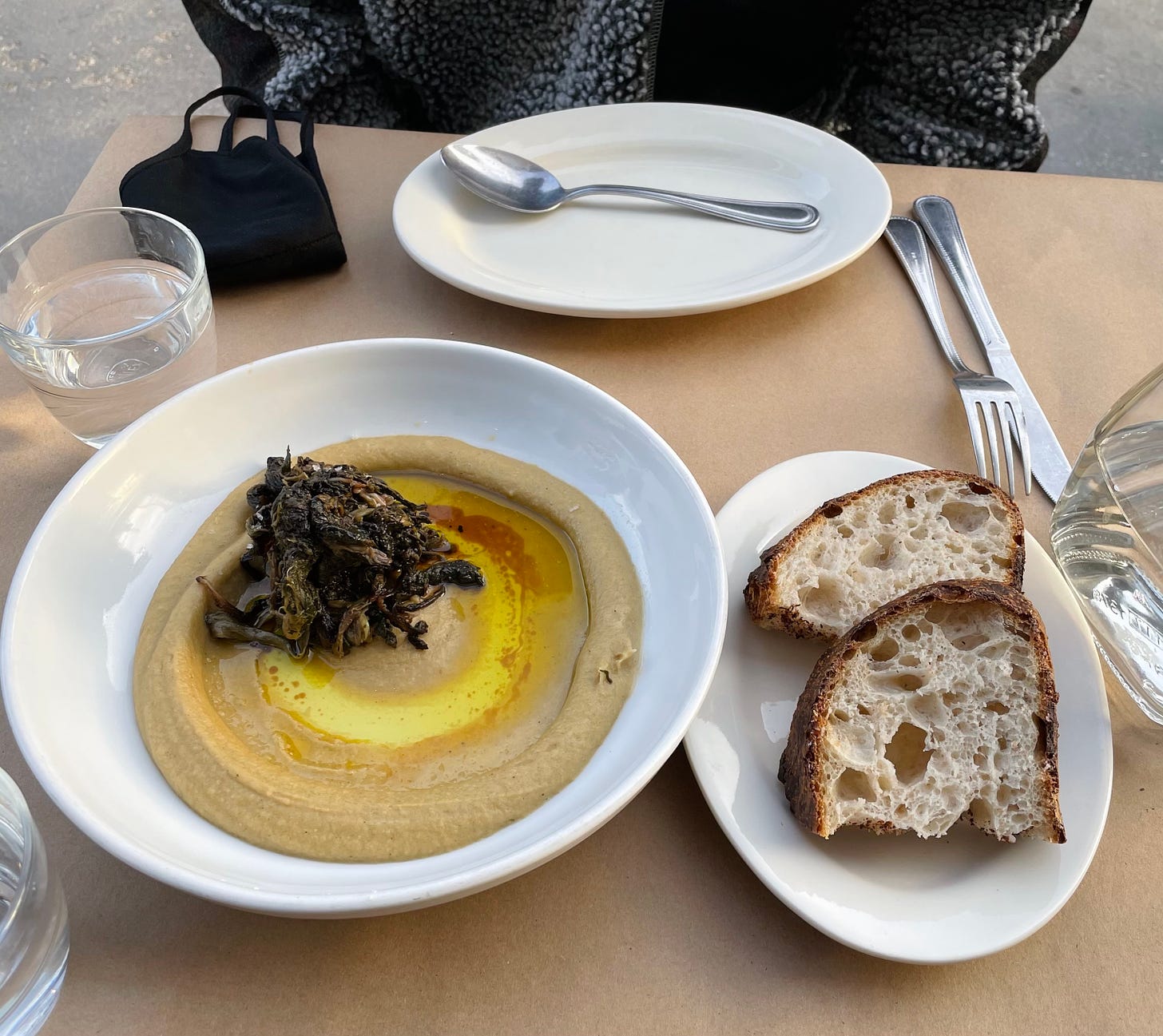What I want to cook and how I like to eat
Super Natural Simple plus matzoh and rugelach, oysters, kolaches, and more
Cookbooks are portals into intersecting worlds: geographies, cooking philosophies, practiced craft and nerdy technique, personalities and styles, family stories, the lives of restaurants. The possibilities are endless: a cookbook could be a compilation or a deep dive, informed by travel and extensive reporting, made whole with essays and historical accounts, inclusive of memories or interviews.
My collection is ever-growing, but a good chunk of it was purchased over the last year. In fact, for a while cookbooks were the only thing I was buying besides food. I order them on Bookshop, not Amazon, to support local bookstores and when one arrives in the mail, I unwrap it and quickly flip through. Later, when I have more time, I’ll get out my sticky notes and bookmark recipes I’d like to try. On the third read I’ll start getting into the text.
The majority of the cookbooks I own are from the last decade and I’d like to add more publications that have stood the test of time. If you have any recommendations, please send them my way. But it’s my newest cookbook that I’m most excited about right now, and part of that has to do with how it’s not really new.
Heidi Swanson designed Super Natural Simple as a prequel to her two earlier cookbooks, Super Natural Cooking (2007) and Super Natural Every Day (2011). It’s full of easy-to-compile recipes with short ingredient lists that effortlessly showcase the wholesome cooking practice she’s become known for over the years. I’m a longtime reader of Swanson’s blog, 101 Cookbooks, which she started back in the early days of blogging (2003). And yet her style of cooking always felt aspirataional to me. With this latest release, and now that I’ve transitioned to a mostly-vegetarian diet, Swason’s repertoire not only feels achievable, but represents exactly what I want to cook and how I like to eat. A rainbow of fresh produce, whole grains, and nutrient-packed add-ins make for hearty, healthful meals. The writing is minimal, but the photos—shot by Swanson herself—and the recipes speak for themselves. So far I’ve tackled her som tum noodles and big raspberry-rye cookies (both fantastic), but there are so many recipes I want to make; this will be my go-to cookbook throughout the spring and summer.
Chag sameach to all who have been celebrating Passover. If you can find a box of Streit’s Onion & Poppy matzoh, pick it up. We accidentally grabbed one at Mekelburg’s instead of plain, and I do not regret it. Think everything bagel, but matzoh!
And speaking of matzoh, props to Gertie whose excellent savory matzoh brei I had for breakfast yesterday.
Somewhat relatedly, I was talking to my friend Chip about how freakishly good the Zabar’s rugelach is (I know they are not Kosher for Passover) and we both agree that they’re better than the babka. Thoughts?
“Should we get 18, or 24?” my dad asked his mom and me. We were at Balthazar, which recently reopened, and he was talking about oysters.
“Oh, 24, definitely,” my nana said, laughing. A woman after my own heart! We are blood-related, after all.
He ordered six Fanny Bays, six Kusshis, and six of two East Coast varieties whose names I can’t recall.
And soon after there we were, three generations of Wilsons seated on the sidewalk of Spring Street slurping down oysters with pure pleasure.
Someday I’d like to drive cross country and when I get to Texas I plan to pitstop for many kolaches. In the meantime, I’m lucky to have Brooklyn Kolache in my neighborhood, where the current seasonal flavor is Meyer lemon curd—and so good.
Have you ever not really fucked with a restaurant only to return after many years and realize it’s actually kind of great? That happened with me and Lovely Day, which I once thought of as kitschy and whitewashed but now recognize as quirky fusion meets vintage diner. The Nolita café defies categorization and has been around forever (two facts that warrant respect), and the curry udon noodles hit. Same for the macro bowl.
Another new-ish cookbook I like for its simplicity and adaptability is Yossy Arefi’s Snacking Cakes. It’s nice to have on hand for when you have ingredients that’re about to go bad and you feel like baking something. With two days left until my buttermilk’s expiry date, I decided to make her lemon olive oil cake but with tangerine and grapefruit as my citrus, which turned out to be a great idea.
Roman’s is a perfect restaurant because you can people watch from your sidewalk table on DeKalb Avenue while you drink a spritz or a sour then share two salads and two pastas. Everything is excellent but rarely the same since the menu changes daily with the exception of the fava bean dip, which is usually an option and forever in your best interest to order.
It was 70 degrees outside on a recent Friday evening so we drove to Brighton Beach where we met up with our friends Anna and Frank. Unfortunately it was also quite windy, but Varenichnaya’s borscht and fried cabbage vareniki weren’t any less delicious. Towards the end of our meal, a short and elegantly dressed woman who must’ve been at least 80 years old left her post in the kitchen and departed the restaurant. “That is the woman who made these dumplings,” Frank said. “You can tell by how delicate they are.”
Afterwards we stopped at Brighton Bazaar and I picked up a box of Mozartkugel, which are chocolate bonbon filled with pistachio paste and marzipan. The chocolates were invented in 1890 by the Salzburg confectioner Paul Fürst and named after Mozart. We just watched Amadeus, hence why I was drawn to them, but Mozartkugel are scrumptious and made by a variety of producers in Salzburg and manufactuers beyond, due to an interesting history regarding the trademark.
When I saw that Sobre Masa—whose heirloom corn tortillas are worth going out of your way for—was selling a cookie made of Oaxacan corn, cinnamon, and chile de arbol in collaboration with a bakery called Best Damn Cookies, I was skeptical. There are so many excellent cookies in this city and it’s so easy to make great ones at home; the name seemed a bit lofty. But the cookie exceeded my expectations, as did the OG chocolate chip, both creations of Dave Dreifus, a veteran of fancy restaurants like SingleThread Farms in Healdsburg, CA, where he made the fresh-baked cookies that guests receive in their rooms. He’s worth keeping an eye on.
Ruby is a brand of hibiscus water that’s suddenly everywhere and I can’t stop drinking it.
I’ve highlighted various pop-ups and food makers in Some Meals before, so if that’s something you’ve been interested in, be sure to subscribe to Polonsky & Friends’s new newsletter, The Deli. Every Sunday they spotlight a different player in New York’s burgeoning market of artisanal food makers.
~~~
Published (not much, but I have several pieces coming soon):
The April Hit List for dining in NYC, including Dhamaka, Gage & Tollner, Bernie’s, Balthazar, and more for Resy
###
A few recommended reads:
Jason Diamond on Shiva Baby for Grub Street: What Is Shiva Now?
Emily Nunn of The Department of Salad: Bean Salads for Everyone! with Rancho Gordo’s Steve Sando
Aliza Abarbanel for Bon Appétit: This New Chat Line Lets You Text Your Favorite Chefs For Cooking Advice (full disclosure: I am an advisor to DEMI)
Jonathan Nunn for Vittles: Dispatches from the Frontiers of Hype
Lucas Kwan Peterson for the LA Times: We should pay more to eat in restaurants
“The consumer has to pay some of the price,” Ray said, “if we care about better food, better jobs, better care of animals.” But the government, he said, also must pitch in. Medicare for all or an extension of the Affordable Care Act would be a way of “socializing the cost” of supporting restaurants by ensuring the health of workers.
***







